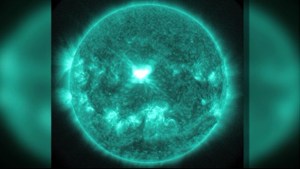ATLANTA — This is not your usual weather forecast. Big storms are brewing. Your umbrella won’t help, but you might want to keep a flashlight handy.
These storms are coming from the sun. It’s raining down a huge amount of radiation. We’re safe, but it could affect power grids, radios and satellites.
Experts say the combined energy from two recent solar events will arrive at Earth on Saturday, prompting the Space Weather Prediction Center to issue a strong Geomagnetic Storm Watch.
What kind of watch? Basically, the sun is a giant ball of gas — 92.1 percent hydrogen and 7.8 percent helium. Every now and then it spits out a giant burst of radiation called a coronal mass ejection, or CME.
CMEs are sometimes associated with solar flares, the most explosive events in the solar system. The sun has released two CMEs in the past two days and both are linked to solar flares. NASA says the second flare is an X1.6 class, putting it in the most intense category.

The energy from those two CMEs is heading toward Earth.
Space weather experts aren’t sure yet what this solar storm will do.
“This is a pretty strong solar storm and we just won’t know until it gets here” what it will do, meteorologist Chad Meyers said.
Earth’s atmosphere usually protects us humans, but you might want to keep a flashlight handy. Solar storms can knock out power, interfere with GPS and radio communications — including those on commercial airliners — and they can damage satellites.
On March 13, 1989, a solar storm knocked out power for the entire province of Quebec for 12 hours. Power grids in the U.S. were impacted, but didn’t have blackouts. NASA says some satellites tumbled out of control for hours during what’s known as the Quebec Blackout. The Space Shuttle Discovery was in orbit at the time and had a mysterious sensor problem that went away after the storm, NASA says.
On the upside, solar storms also create beautiful aurora. Aurora watchers in the northern U.S. should be watching the skies on Thursday and Friday nights.